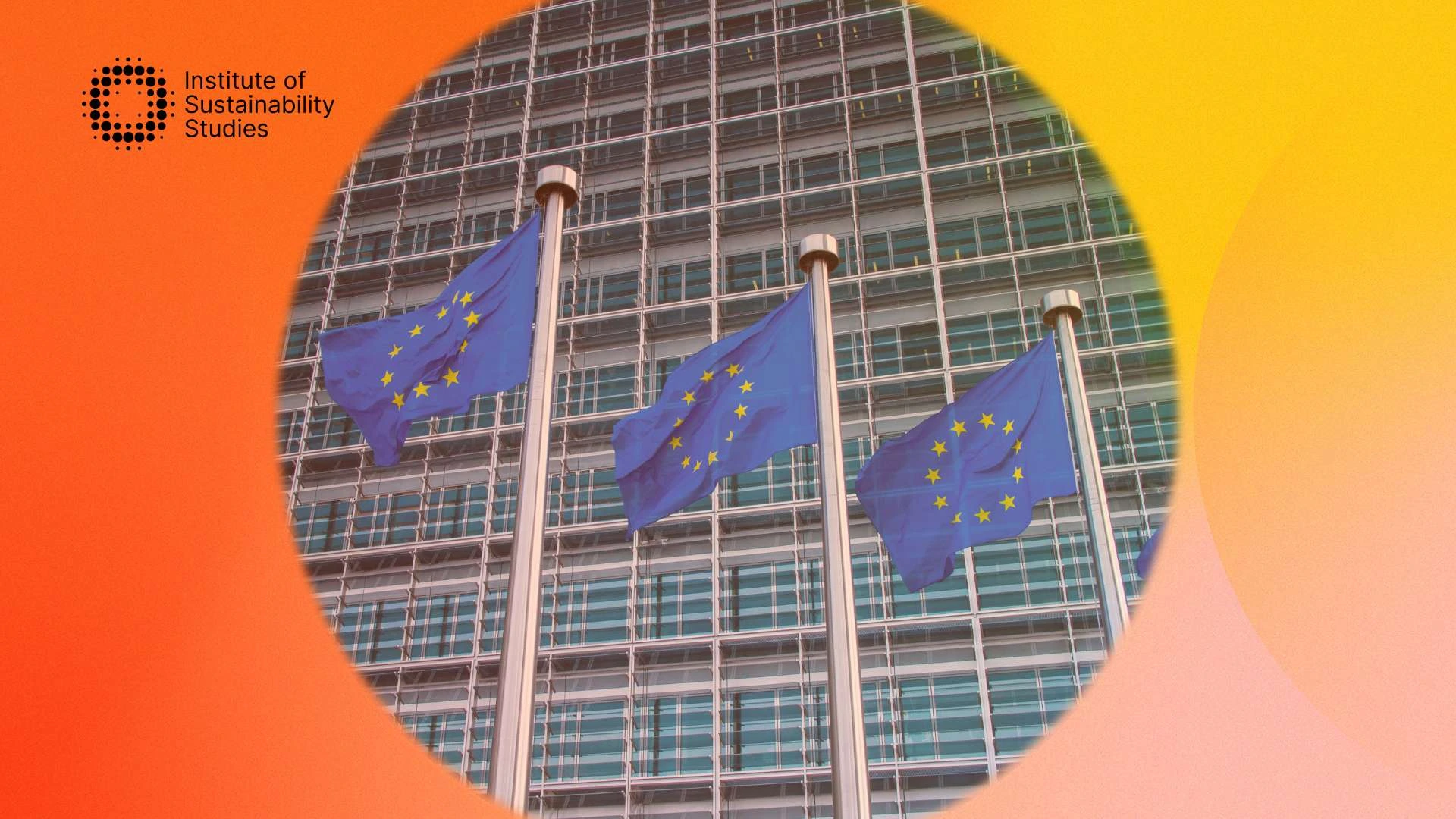Sustainable transport solutions are a cornerstone of modern business sustainability strategies, playing a pivotal role in reducing carbon emissions, conserving resources, and improving urban life. Transport represents the second-largest source of greenhouse gas emissions in Ireland. Emissions from transport accounted for 9.3 percent and 21.4 percent of total greenhouse gas emissions in 1990 and 2023, respectively.
Given this, businesses and governments must prioritise innovative solutions to make mobility greener and more efficient. From electrification and shared mobility to policy reforms and urban planning, sustainable transport has evolved from a niche concept into a global imperative. Below, we explore current trends in sustainable transport and strategies for greening the industry.
What is sustainable transport?
Sustainable transport solutions refer to systems, policies, and practices designed to meet society’s current and future mobility needs while minimising environmental impact, promoting social equity, and fostering economic growth. It aims to balance the demand for efficient transportation with the need to reduce greenhouse gas emissions, conserve resources, and improve urban liveability.
Current trends in sustainable transport
Sustainable transport solutions continue to evolve, driven by innovation, policy shifts, and societal demands for greener and more efficient mobility solutions. Below are some key trends shaping the sector.
Electrification of transport
The electrification of vehicles is a major trend in sustainable transport. The adoption of EVs is accelerating, driven by advancements in battery technology, increased range, and the expansion of charging infrastructure. Many governments are incentivising EV adoption and committing to phasing out internal combustion engines. Public transport is also being electrified, with cities transitioning bus fleets to electric and hybrid models. Additionally, e-mobility solutions such as electric bikes and scooters are providing low-carbon options for short-distance travel.
Expansion of public transport networks
Modernising and expanding public transport systems is another critical focus. Investments are being made in high-speed rail, metro networks, and electric trams to reduce emissions and improve urban mobility. The integration of “Mobility as a Service” (MaaS), which combines various transport options like buses, trains, and bike-sharing into a single digital platform, is gaining traction to enhance user convenience and reduce reliance on private cars.
Growth of active transport infrastructure
Cities are prioritising the development of infrastructure to support walking and cycling as sustainable transport solutions. This includes pedestrian-friendly streets and dedicated cycling lanes to encourage active commuting. Bike-sharing programmes, including dockless systems and e-bike options, are increasingly popular, offering accessible and eco-friendly alternatives to car travel.
Shared mobility
Shared mobility is playing a significant role in reducing single-occupancy vehicle trips. Ride-sharing platforms such as Uber and Lyft, along with carpooling apps, are making shared transport more accessible. Car-sharing services like Zipcar and bike-sharing schemes are further reducing the need for personal vehicle ownership and Turo, as well as supporting a shift towards more sustainable travel behaviours.
Autonomous and connected vehicles
Autonomous vehicle (AV) technology is advancing, with pilot projects exploring its potential to improve traffic flow, enhance road safety, and reduce emissions. Connected vehicles, enabled by IoT technology, are optimising routing and transport management. Together, these technologies could revolutionise transport efficiency and sustainability.
Adoption of renewable energy in transport
The use of renewable energy in transport is growing, with solar and wind power increasingly being used to charge EVs and power electric public transport. Hydrogen fuel cell technology is also gaining momentum, particularly for heavy transport sectors like trucking and shipping, offering a clean alternative to fossil fuels.
Sustainable urban planning
Urban areas are being designed to promote sustainability through compact city layouts and transit-oriented development (TOD). These designs integrate residential, commercial, and leisure spaces with efficient public transport to reduce car dependency. Smart city initiatives are also leveraging data and technology to optimise traffic flow and encourage sustainable transport solutions.
Policy and regulation
Governments are implementing stricter emission standards, fuel efficiency targets, and bans on fossil fuel vehicles to drive the adoption of sustainable transport. Low-emission zones (LEZs) in cities incentivise cleaner vehicles and public transport, pushing businesses and individuals toward greener mobility solutions.
Decarbonising freight transport
Efforts to decarbonise freight transport include the development of electric and hydrogen-powered trucks and the increasing use of rail and water freight for long-distance goods transport. In urban areas, last-mile delivery solutions like e-cargo bikes and drones are helping reduce emissions from deliveries.
Circular economy in transport
The circular economy is influencing the transport sector, with an emphasis on using sustainable materials and designing vehicles for greater recyclability. Retrofitting older vehicles and infrastructure is also gaining traction, extending their lifespans and reducing waste.
Strategies for greening the transport industry
By adopting the below sustainable transport solutions, the transport industry can transition towards a low-carbon, efficient, and sustainable future.
Electrification of vehicles
One of the most effective strategies for reducing emissions is the transition to EVs. This involves expanding charging infrastructure, incentivising EV purchases through subsidies and tax breaks, and transitioning public and freight transport vehicles to electric or hybrid models. Electrification significantly reduces reliance on fossil fuels and is a cornerstone of decarbonising transport.
Promoting active transport
Encouraging walking and cycling is a low-impact way to reduce reliance on motor vehicles. Cities can support active transport by building dedicated cycling lanes and pedestrian-friendly streets, integrating bike-sharing programmes, and incorporating active transport options into urban planning. These measures not only reduce emissions but also improve public health and well-being.
Optimising public transport
Modernising public transport systems can greatly improve sustainability. Transitioning to electric or hybrid buses, trams, and trains reduces emissions while expanding networks increases accessibility and reduces car dependency. Efficiency can also be enhanced with technologies like smart ticketing systems and real-time tracking, making public transport a more appealing option.
Decarbonising freight and logistics
Freight transport can be made greener by electrifying delivery vehicles, adopting alternative fuels like hydrogen, and shifting long-distance freight to rail or water transport. Additionally, supply chain routes can be optimised using AI and IoT technologies to minimise emissions. Last-mile delivery solutions, such as e-cargo bikes and drones, further reduce the environmental impact of urban freight.
Implementing LEZs
LEZs are a powerful tool for reducing urban emissions. These zones restrict access to high-emission vehicles, encouraging cleaner, fuel-efficient alternatives. LEZs can also generate funding for sustainable infrastructure projects through congestion charges, creating a positive feedback loop for green urban development.
Investing in renewable energy
Integrating renewable energy into transport systems is crucial for sustainability. Public transport and EV charging stations can be powered by solar, wind, or hydroelectric energy. Green hydrogen production is another promising solution for decarbonising heavy transport sectors like trucking and shipping. Microgrids can also be developed to support decentralised renewable energy systems.
Advancing shared mobility
Shared mobility solutions can significantly reduce the number of vehicles on the road. Ride-sharing and carpooling platforms help reduce single-occupancy vehicle trips while car-sharing programmes lower the need for personal car ownership. Shared micromobility options, such as e-scooters and bicycles, offer sustainable alternatives for short commutes.
Integrating smart transport technologies
Technology plays a vital role in optimising transport systems. IoT and AI can be used to monitor traffic patterns and optimise routes, reducing congestion and emissions. Autonomous vehicles designed for energy efficiency are being tested, and MaaS platforms are integrating multiple modes of transport into seamless, user-friendly systems.
Enhancing urban planning
Urban planning can play a significant role in reducing transport emissions. Compact, mixed-use urban areas reduce the need for long commutes, while TOD places housing, jobs, and services near public transport hubs. Incorporating green spaces and pedestrian zones into city plans also promotes sustainable transport solutions.
Policy and incentive measures
Governments can drive green transport by implementing stricter fuel efficiency standards, emissions regulations, and subsidies for renewable energy integration. Funding research and development for sustainable transport technologies and offering financial incentives for businesses and individuals to adopt green practices are critical components of effective policy.
Summary
Sustainable transport solutions are not just a necessity for reducing environmental impact; it is also a critical driver for future-ready mobility systems that align with global sustainability goals. Innovations like electrification, shared mobility, and smart transport technologies are already paving the way for a more connected, efficient, and sustainable world.
However, more needs to be done, and if governments and businesses play their role, the transport industry is poised to become a key player in the transition to a low-carbon economy. Achieving this vision will require continued collaboration, investment in technology, and a commitment to equitable and inclusive solutions.
Dedicated to harnessing the power of storytelling to raise awareness, demystify, and drive behavioural change, Bronagh works as the Communications & Content Manager at the Institute of Sustainability Studies. Alongside her work with ISS, Bronagh contributes articles to several news media publications on sustainability and mental health.
- Bronagh Loughlinhttps://instituteofsustainabilitystudies.com/insights/author/bronagh/
- Bronagh Loughlinhttps://instituteofsustainabilitystudies.com/insights/author/bronagh/
- Bronagh Loughlinhttps://instituteofsustainabilitystudies.com/insights/author/bronagh/
- Bronagh Loughlinhttps://instituteofsustainabilitystudies.com/insights/author/bronagh/










